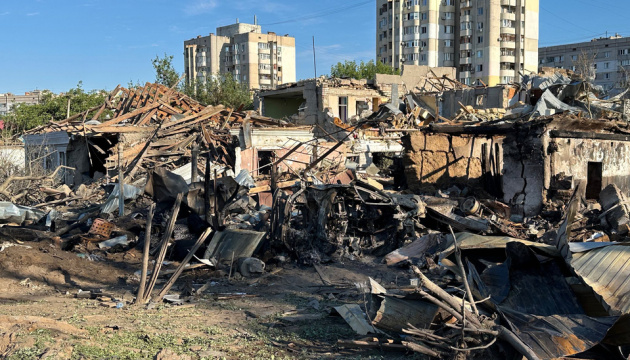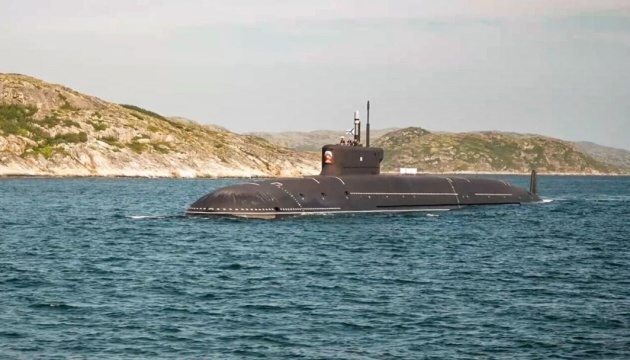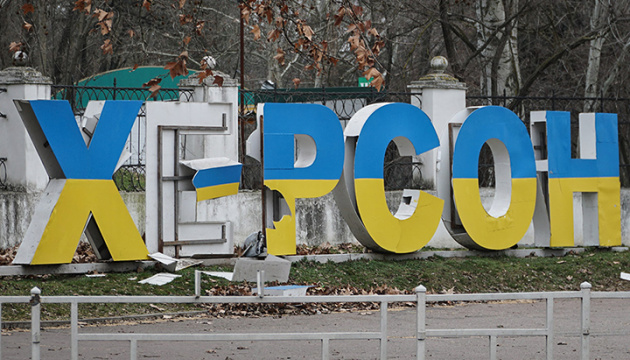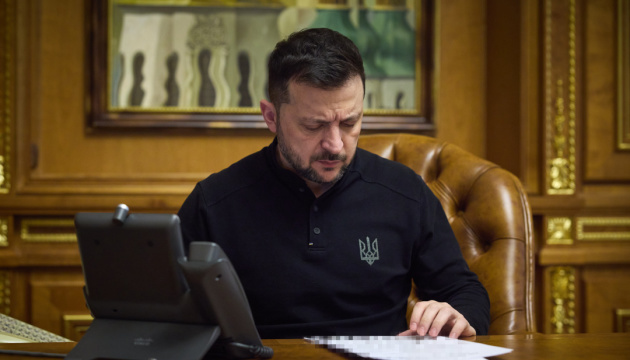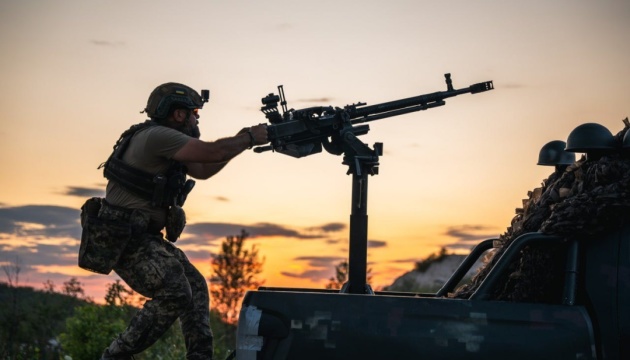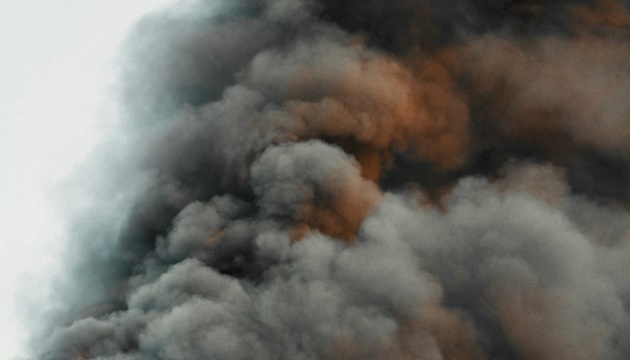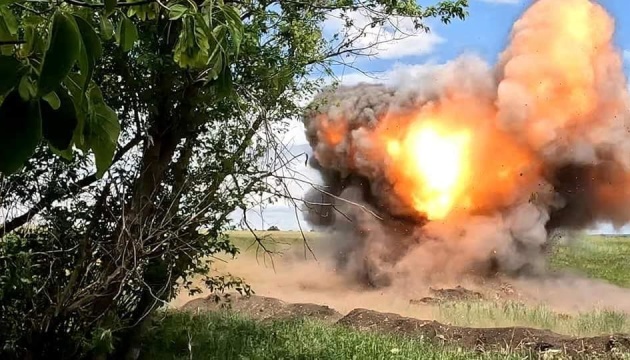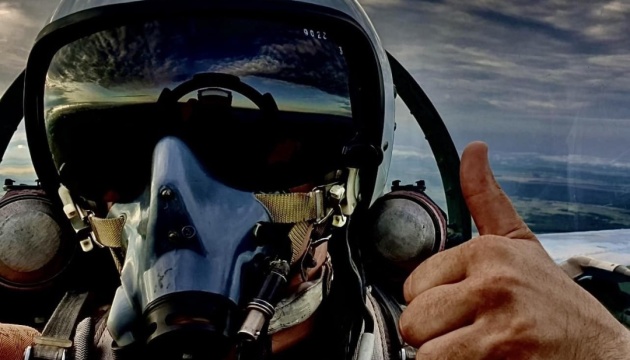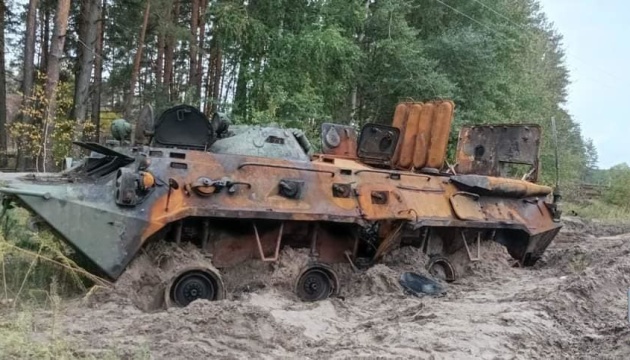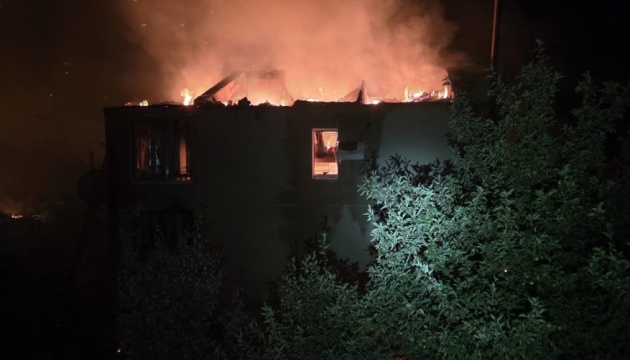Death toll from Russian strike on Kramatorsk rises to five
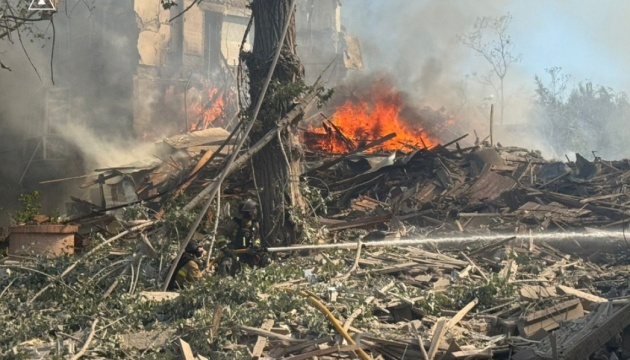


© Copyright 2022 The Associated Press. All rights reserved

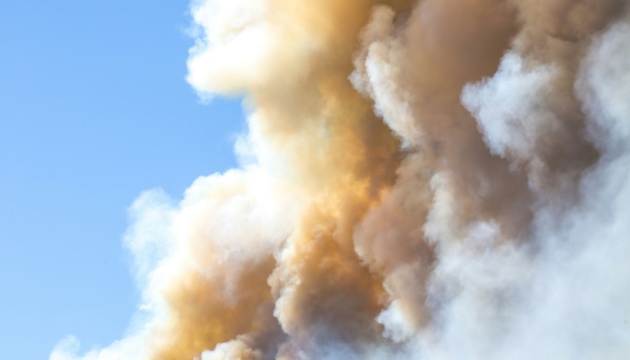


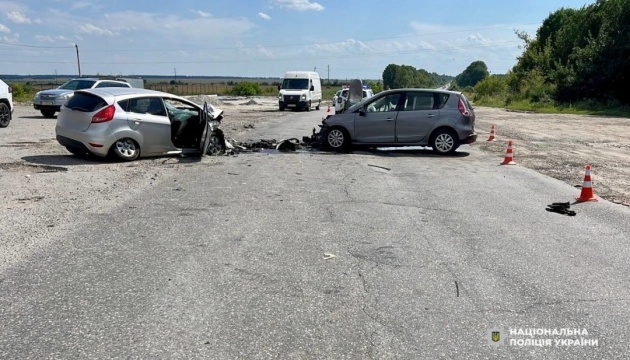
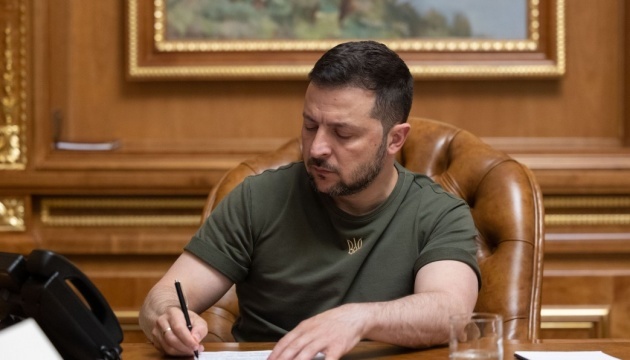

American B-2 strategic bombers flew tens of thousands of kilometers from US airbases to Iran, carried out strikes on targets, and returned. This demonstrative action was intentional, aimed at showing the world that the US remains the unquestionable military leader, Kyrylo Budanov, Ukraine’s Intelligence Defense chief, told Nataliia Moseichuk.
The war began on 13 June 2025, when Israel launched strikes on Iran’s nuclear and military facilities. Iran responded with massive missile and drone attacks targeting both military and civilian sites in Israel. On 22 June, the US joined the fighting, striking three of Iran’s nuclear facilities. The war ended with a fragile ceasefire. No official peace agreements were signed, and tensions remain high.
“The US has now regained unquestionable military leadership in the world. They showed everyone: we can do it, if we decide to,” claimed Budanov.
Budanov emphasized that the US had simpler options — to launch strikes from bases in Europe or the Middle East. But they deliberately chose the longest route — from their own territory, accompanied by tankers and fighter jets.
“It would have been cheaper economically, logistically easier, tactically easier… But they made a demonstrative move — the most powerful one. At one moment, B-2s took off from US airbases… They flew in from the States, bombed the targets, and returned,” he explained.
When asked whether this maneuver impressed Putin, Budanov replied directly: yes, and very much so. The US showed that it can strike any point on the globe.
“It made a deep impression on him. Very deep. No one had done anything like this before. And frankly, no one else can,” said Budanov.

Anti-graft agencies have exposed a scheme of drone bribery involving a ruling party MP and National Guard officers. Ukrainian President Volodymyr Zelenskyy said that those responsible will face justice after investigators revealed how vital military supplies were turned into a source of personal profit.
On 2 August that the National Anti-Corruption Bureau (NABU) and the Specialized Anti-Corruption Prosecutor’s Office (SAPO) briefed Zelenskyy about a large scheme involving inflated contracts for drones and electronic warfare systems. This was reported by NABU and Zelenskyy.
A source from law enforcement told Liga that the MP implicated is Oleksii Kuznietsov from Zelenskyy’s Servant of the People party.
Zelenskyy confirmed in a statement that “a deputy of the Verkhovna Rada of Ukraine,” heads of local administrations and National Guard servicemembers were caught taking bribes connected to drone contracts.
He called such behavior immoral and damaging, adding that full accountability is necessary. Zelenskyy said he thanked the anti-corruption agencies for their work and said that he expected fair verdicts in the case.
Servant of the People announced that MP Oleksii Kuznietsov’s membership in the faction will be suspended for the duration of the investigation into the exposed drone bribery scheme.
Zelenskyy also said that Interior Minister Ihor Klymenko had started an internal investigation in the National Guard after the exposure of the scheme. Klymenko announced that only combat officers will lead logistics units from now on. He promised to make the results public. According to Klymenko, the commander of the National Guard Oleksandr Pivnenko has already suspended servicemembers allegedly involved in the drone bribery scandal.
Klymenko assured that new safeguards will be introduced in the National Guard to prevent such schemes. He said that a new internal control unit will monitor service activity, working independently and professionally. The team is being formed from specialists who passed checks for integrity and professional competence.

President Volodymyr Zelenskyy has officially appointed Lieutenant General Anatoliy Kryvonozhko as the new Commander of the Ukrainian Air Forces.
The appointment comes as peace talks with Russia remain stalled and missile and drone attacks on Ukrainian cities intensify. Hundreds of strikes in recent weeks have overwhelmed air defenses, damaged infrastructure and killed civilians, putting the Air Forces at the center of Ukraine’s defense strategy.
Kryvonozhko has been acting commander since 30 August 2024, following the dismissal of Mykola Oleschuk.
Zelenskyy removed Oleschuk a day after the Air Forces reported that on 26 August 2024, during a massive Russian attack, Ukrainian pilot Oleksii “Moonfish” Mes was killed—the first time Ukraine lost an F-16 fighter jet. As of August 2025, open sources report that four F-16s have been lost: three pilots killed and one who managed to eject.
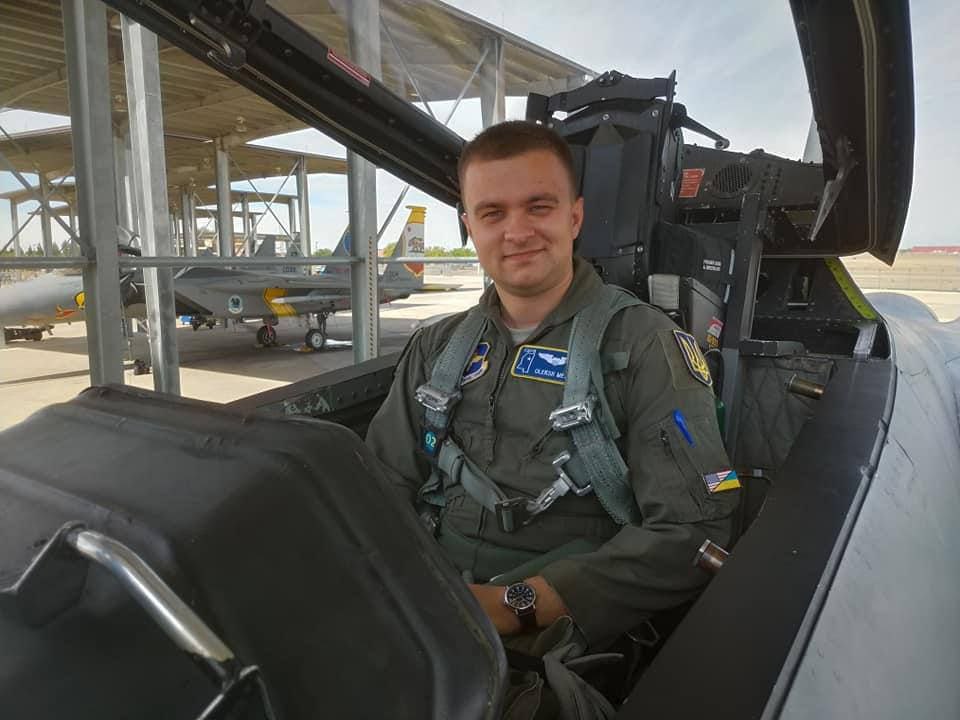
In January 2025, after controversy over reassignment of Air Force specialists to infantry units, Zelenskyy instructed Kryvonozhko to ensure that the Air Forces retained all essential personnel.
His official confirmation was announced on Air Forces Day, a symbolic gesture intended to recognize the importance of those defending Ukraine’s skies.
Announcing the appointment, Zelenskyy emphasized closer coordination between all branches of Ukraine’s defense:
“It’s crucial that Ukrainian combat aviation and air defense develop in a coordinated way with the military, partners and experts who want strength and victory for Ukraine,” Zelenskyy said.

His experience managing air defenses during some of the heaviest Russian strikes of the war has made him a key figure in Ukraine’s military leadership.
With Russian airstrikes intensifying and diplomatic negotiations stalled, the confirmation of a permanent Air Forces commander strengthens Ukraine’s ability to respond. The Air Forces will continue to play a decisive role in protecting civilian infrastructure and countering missile and drone attacks as the war enters another challenging phase.

The British “Bulldog” has become a guardian angel on the front line. The 12th Azov Brigade soldiers have given the FV432 armored personnel carrier (APC) a second life, not as a combat vehicle but as a high-tech medical evacuation unit.
The FV432, a British analogue of the American M113, was originally produced in the 1960s, Militarnyi reports. Volunteers recover decommissioned vehicles from private owners in the UK and bring them to Ukraine.
But to make it more than just a “box on tracks,” it took skilled hands and sharp minds, exactly what the Azov fighters brought.

“We got these vehicles that we can drive to the front line and quickly evacuate the wounded,” says driver-mechanic, known as Bielyi.
The Bulldog was initially empty, just old, unsecured seats. The soldiers completely rebuilt the interior for medical use.
“We turned to the guys, and they helped us build what I’d call a super project,” Bielyi says.
They stripped the lining and painted it white to better detect blood and dirt. They added tourniquet organizers, stretcher mounts, an autonomous diesel heater, an oxygen concentrator, lighting, and surveillance cameras with a better angle than the standard periscope.
According to Bielyi, the key advantages are the tracked chassis and strong armor, which can withstand RPG fire. This makes it possible to evacuate the wounded under dangerous conditions without getting stuck in mud.
“The machine is as simple as a bicycle. To learn to drive it takes about 7 to 15 minutes,” he jokes.
He concludes that evacuation will be more efficient, faster, and higher-quality, which means one thing: more lives will be saved.
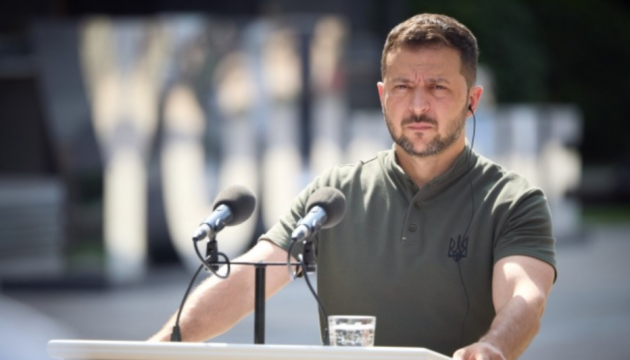
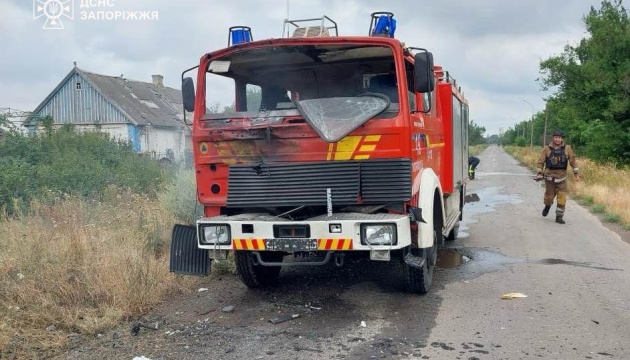

Today, there are important updates from the Pokrovsk direction. Here, Russian sabotage units slipped through a gap in Ukrainian defenses on the outskirts of Pokrovsk, taking control of buildings and launching ambushes on Ukrainian units passing by. However, Ukrainian rapid reaction forces responded immediately, clearing the infiltrators before Russia could exploit the breach.
To the south of Pokrovsk, Russian sabotage and reconnaissance units managed to infiltrate the outskirts of the town through Zvirove, exploiting a momentary Ukrainian infantry shortage that created a large gap on the frontline. Leveraging local terrain such as the terrikon area, these infiltrators staged ambushes, targeting passing Ukrainian patrol vehicles, and dug themselves in in several houses throughout Pokrovsk.
However, the Ukrainian command responded swiftly by deploying rapid reaction units, urgently initiating clearance operations to neutralize the infiltrators and swiftly deal with this sudden threat. Nevertheless, small enemy groups continued their attempts at infiltration, primarily at night, aiming to secure positions within the town perimeter until reinforcements arrived.
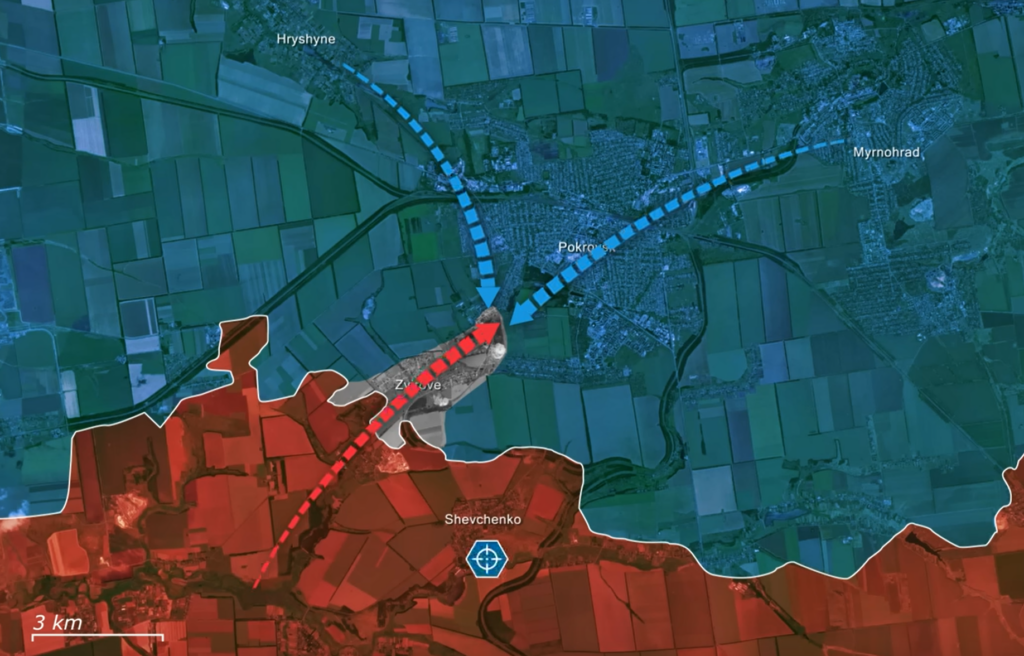
To counteract these persistent threats, Ukrainian forces have intensified drone surveillance over key infiltration routes, with the 47th Separate Assault Brigade releasing footage showing drone strikes successfully neutralizing enemy infantry near Zvirove.
Following this infiltration, the Russians appeared briefly poised for a direct assault on Pokrovsk, yet their reaction was curiously delayed. They were not ready to exploit the sudden break in the lines, causing them to miss the brief window of Ukrainian vulnerability. By the time Russian forces assembled for an organized push, Ukrainians had reorganized the defense, and they had to start from scratch with preliminary probing attacks.
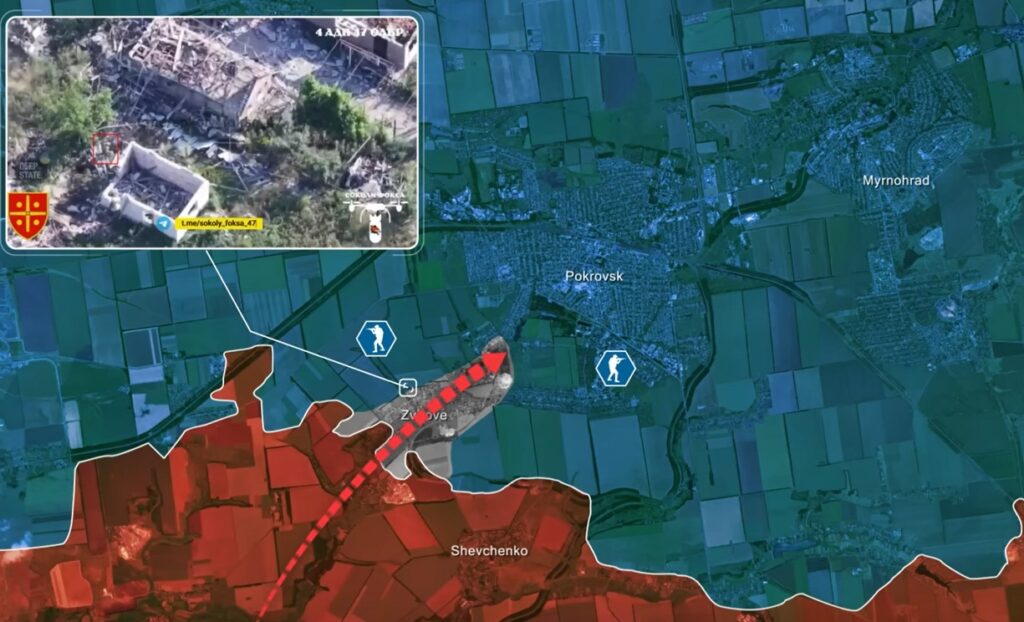
One such attempt involved an infantry assault group mounted on motorcycles departing from Shevchenko, but Ukrainian FPV drone operators swiftly detected and eliminated them before they could even leave their staging area.
Undeterred, Russian commanders attempted a mechanized assault, the first in months for this area, again originating near Shevchenko, employing three armored vehicles. Ukrainian artillery and drone teams swiftly responded, obliterating the advancing armor in open terrain, exploiting their vulnerability without cover.
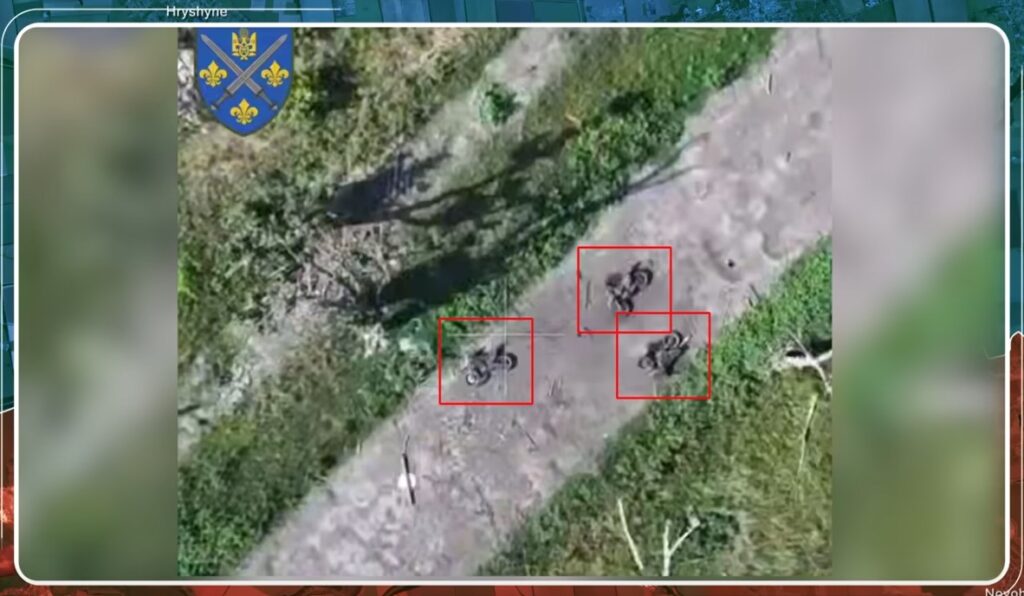
The Russians were also desperate enough to move up a TOS-1 thermobaric artillery piece near the frontline, an immensely powerful artillery system, but suffering from a short range of under 4 kilometers, allowing Ukrainians to easily destroy such a powerful Russian asset.
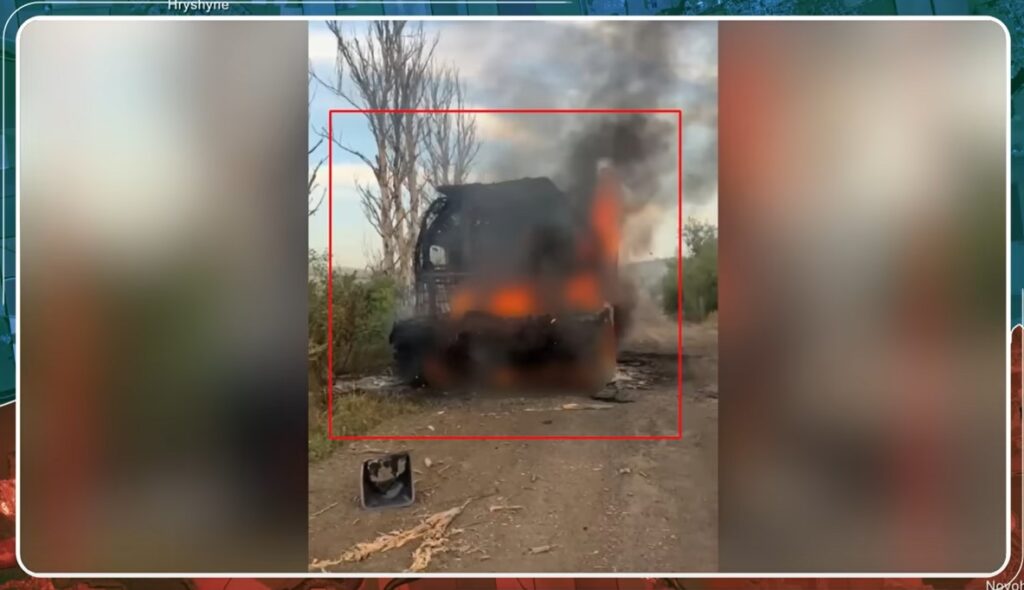
A significant factor contributing to these disorganized and ineffective Russian attempts lies in Ukraine’s strategic operational targeting, which has severely disrupted Russian logistics and command structures. Ukrainian HIMARS missile strikes systematically target troop concentrations in and around Donetsk city, effectively thinning out Russian frontline manpower long before troops even deploy forward.
Such attacks drastically reduce Russian operational readiness and create logistical nightmares, leaving commanders scrambling to find soldiers for assaults.
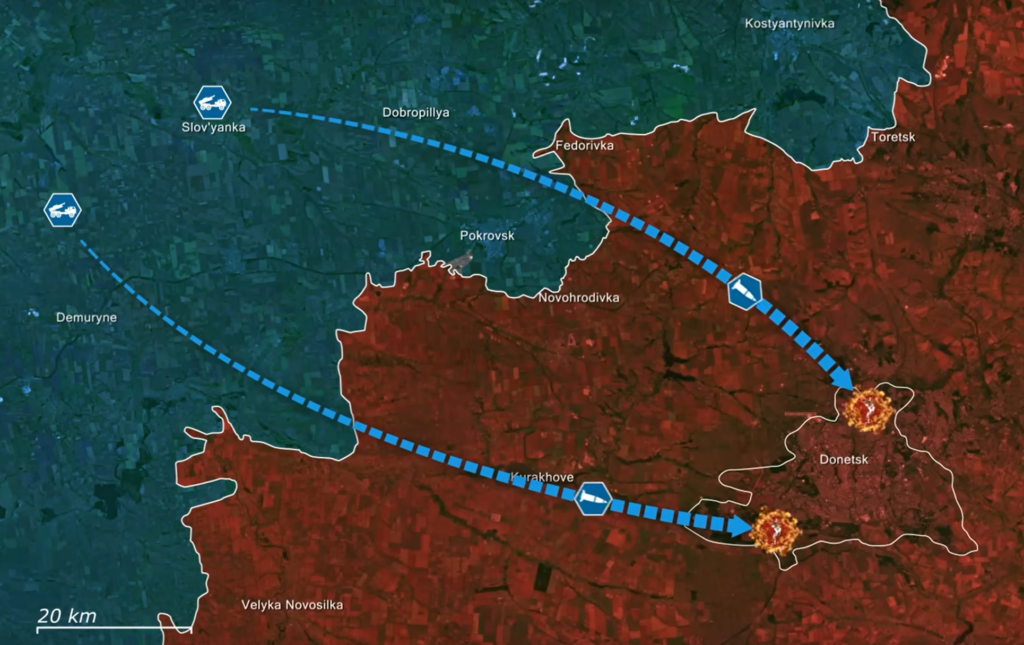
Further deepening Russian disarray, Ukrainian forces recently executed a devastating follow-up precision strike on the headquarters of Russia’s 8th Guards Combined Arms Army in Donetsk. As you remember from a previous report, the first successful strike took out the only Russian commander who made any real gains for Russia in the past year.
Now the second strike effectively decapitated the Russian local command by killing the newly appointed commander, along with more than 10 other high-ranking officers, including his potential successor.
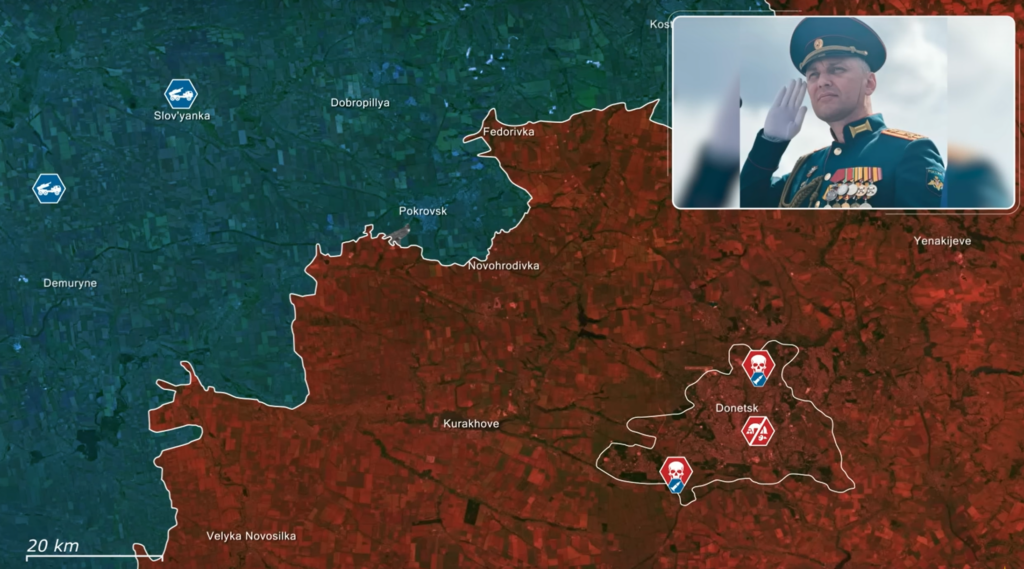
Ukrainian military officials confirmed these strikes aimed to cripple Russian command-and-control capabilities, with the new Russian commander being at the head of Russia’s most important offensive, who hasn’t planned it, and might not be qualified to lead 100,000 soldiers in a multidirectional offensive spanning from Velyka Novosilka to Pokrovsk. The latest Ukrainian attack also targeted the command post of Russia’s 20th Motorized Rifle Division, causing additional damage to the Russian command structures.
Overall, Russian forces did manage to identify a weak spot on Pokrovsk’s southwestern perimeter, briefly infiltrating it with sabotage units. However, rapid Ukrainian reactions combined with continuous drone coverage effectively neutralized these threats before Russia could capitalize on any gains. Although initial direct assault attempts were swiftly repelled, the battle for Pokrovsk has decisively begun and will likely intensify significantly.
Recognizing the massive Russian buildup in the region, over 100,000 troops strong, Ukrainian commanders have proactively targeted troop concentrations and command structures. These measures aim to disrupt Russian operational cohesion and decisively weakened their massive force deployment, laying the groundwork for continued successful defense that could break Russian forward momentum.
In our regular frontline report, we pair up with the military blogger Reporting from Ukraine to keep you informed about what is happening on the battlefield in the Russo-Ukrainian war.
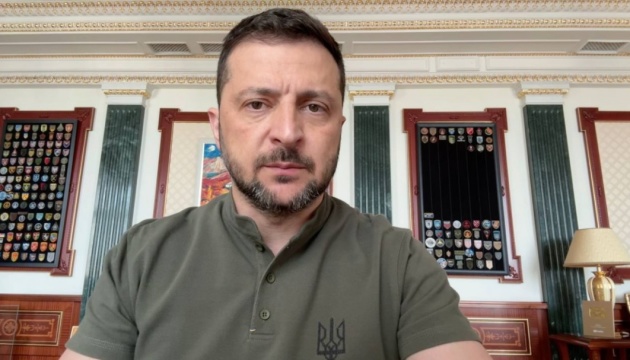

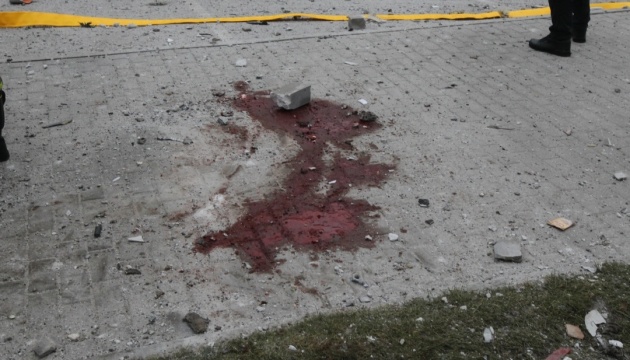
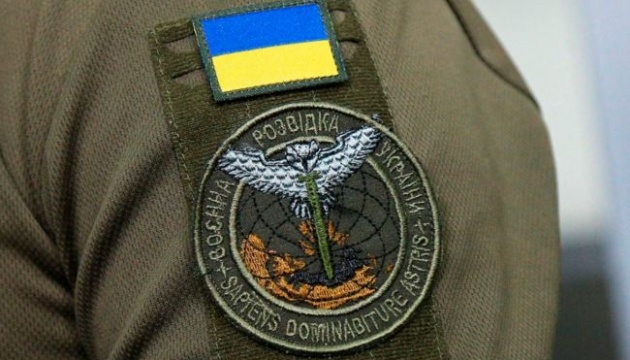
Askold Krushelnycky examines how Donald Trump’s fluctuating position on the Ukraine war has encouraged Kyiv to look closer to home to produce the weapons it needs to fight Russia

© Ukrainian Armed Forces

Adler oil depot burned after Ukrainian drones struck overnight, igniting a 2,000 cubic meter fuel tank near Sochi, southern Russia, around 530 km from the frontline. The strike forced a halt to flights at Sochi airport while emergency crews worked through the night to contain the blaze. The attack targeted Rosneft’s Kubannefteproduct oil depot on Aviatsionnaya Street in Adler, right next to the airport.
The oil depot includes 41 tanks with a combined capacity of around 31,200 cubic meters.
In the early hours of 3 August, Ukrainian strike drones hit the Adler district of Sochi in Krasnodar Krai. Telegram channels Astra and Exilenova+ reported that the drones struck the Rosneft-Kubannefteproduct oil depot, causing a powerful fire. Local authorities confirmed the fire and the suspension of flights. The depot sits not far from the Sochi airport, which led to an immediate halt to flight operations.
Mayor Andrii Proshunin of Sochi, Krasnodar Krai Governor Veniamin Kondratiev, and Russia’s Ministry of Emergency Situations confirmed a drone attack on the depot, and the fire. They claimed that falling debris from destroyed drones caused a single tank to ignite. Footage from the site, however, shows two ignition points at the facility.
The Ministry of Emergency Situations said the fire broke out in a fuel tank with a volume of 2,000 cubic meters. They also claimed that debris from drones damaged five garages in a cooperative and a shop, which also caught fire. Governor Mikhail Kotyukov said,
“In Adler district, drone debris hit a fuel tank, causing a blaze. 127 personnel and 35 units of equipment have been deployed to eliminate the consequences of the fire.”
The strike forced the closure of Sochi airport for more than two hours overnight. Airport services later announced that disruptions would continue for at least a day.
“Together with airlines, we are doing everything possible to stabilize the regular schedule as soon as possible, but it will take 1–2 days,” airport representatives said.
On the same night, drones also targeted other areas. Governor Aleksandr Gusev of Voronezh Oblast claimed that 15 drones were downed over Voronezh city and Liskinsky district. Russian officials said debris from drones caused fires and damaged single-family homes. Explosions and fires were reported across Voronezh.
Exilenova+ reported that the activity of electronic warfare systems led to several dorne crashes and fires across Voronezh.
A separate fire was reported at the Kstovo oil depot in Nizhny Novgorod Oblast after a drone threat was announced in the area, though it remains unclear whether that was a result of a Ukrainian strike.
This attack marks the second major strike on oil infrastructure in Adler in recent weeks. On 24 July 2025, Ukrainian drones struck the Lukoil-Yugnefteproduct depot, which likely supplies Sochi International Airport. That strike caused a large fire at the site.
The Adler oil depot follows a wave of Ukrainian drone attacks on 2 August across Russian territory.

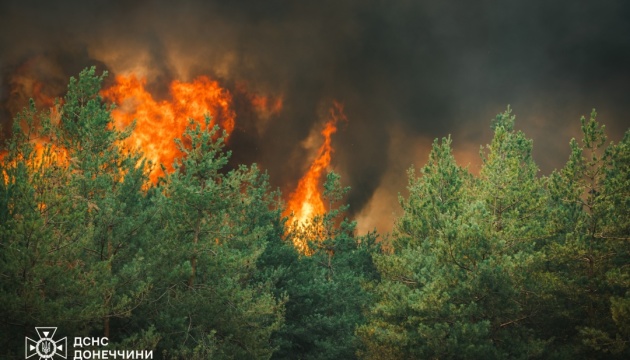
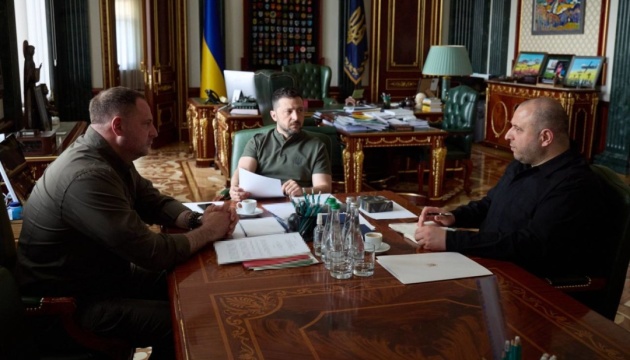
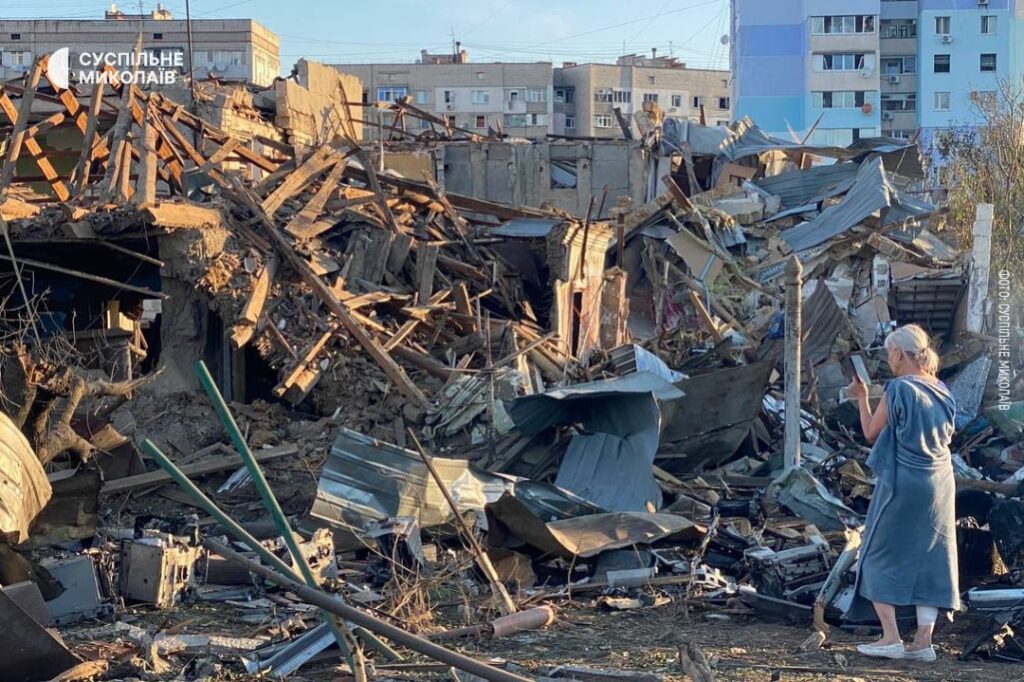
Nightly Russian drone attacks again battered Ukraine as missiles and Shaheds rained down on several cities, causing injuries and damage. Local authorities said explosions and fires struck homes and infrastructure across the country as power outages and destruction mounted.
In the late evening of 2 August, Russian forces launched missiles on Mykolaiv and Kherson. The State Emergency Service reported that in Mykolaiv explosions destroyed single-family homes and damaged apartments, igniting fires in a residential district.
The head of Mykolaiv Oblast, Vitalii Kim, said seven people were injured, with four treated on site and three hospitalized. A 57‑year‑old man and a 74‑year‑old man were hospitalized in moderate condition, and a 32‑year‑old man received outpatient care. Kim confirmed that three houses were destroyed, 23 more were damaged, and 12 apartment buildings, six vehicles, a postal branch and a building materials store were also hit. After the attack, parts of Mykolaiv Oblast lost electricity. The head of Kherson Oblast, Oleksandr Prokudin, also reported power outages after evening missile explosions.
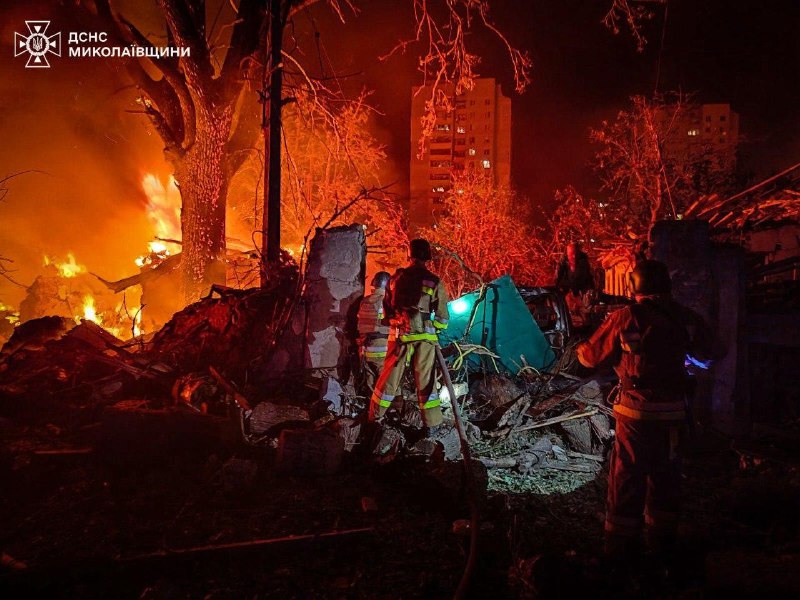
Russian forces struck Kharkiv in the night with two Shahed drones. Oleg Synehubov, the head of Kharkiv Oblast, reported that a central district of the city was hit. Mayor Ihor Terekhov said one explosion damaged warehouse buildings near residential areas, with no injuries there. Another drone fell in a forest without detonating.
Synehubov said that explosions in Chuhuiv and Balakliia caused fires in detached homes. In Chuhuiv, Mayor Halyna Minaieva said three women suffered acute stress reactions, and houses had windows and roofs damaged. In Balakliia, city military administrator Vitalii Karabanov said more than ten drones struck one street, setting over ten homes on fire. He confirmed at least one injured person. Casualty numbers there are still being clarified.
In Kyiv, city military administration chief Tymur Tkachenko confirmed a missile strike during the night, with details still unknown.
Lithuanian volunteer organization Blue/Yellow says that Russia’s previous attack on 31 July destroyed its Kyiv warehouse. Lithuanian broadcaster LRT reported that a Shahed drone completely demolished the building used for storing humanitarian aid before shipment to the front. The organization said the warehouse contained mainly helmets and protective vests and that surrounding buildings were also damaged.
The Air Force of Ukraine reported that between 19:00 on 2 August and early 3 August, Russia attacked with 76 Shahed and decoy drones, and seven missiles, including an Iskander‑M ballistic missile, five S‑300/S‑400 surface‑to‑air missiles used for ground attacks, and one Kh‑22 cruise missile.
Ukrainian air defenses shot down or suppressed 61 air targets: 60 drones and one ballistic missile. Despite this, six missiles and 16 drones struck eight locations, with debris falling in two more places. Air defense units, aviation, radio‑electronic warfare systems and mobile fire teams all took part in repelling the assault.
On the morning of 3 August, Russian forces used artillery against Kostiantynivka in Donetsk Oblast. City military administrator Serhii Horbunov reported that shells hit residential areas, killing one person. He said that Russian troops struck civilian infrastructure and confirmed that the attack resulted in at least one death.
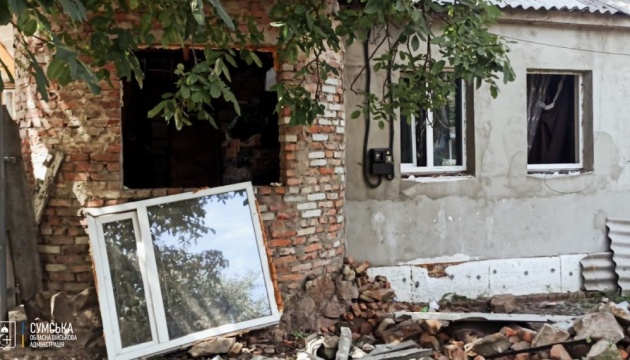

© Ukrainian Ministry of Defense

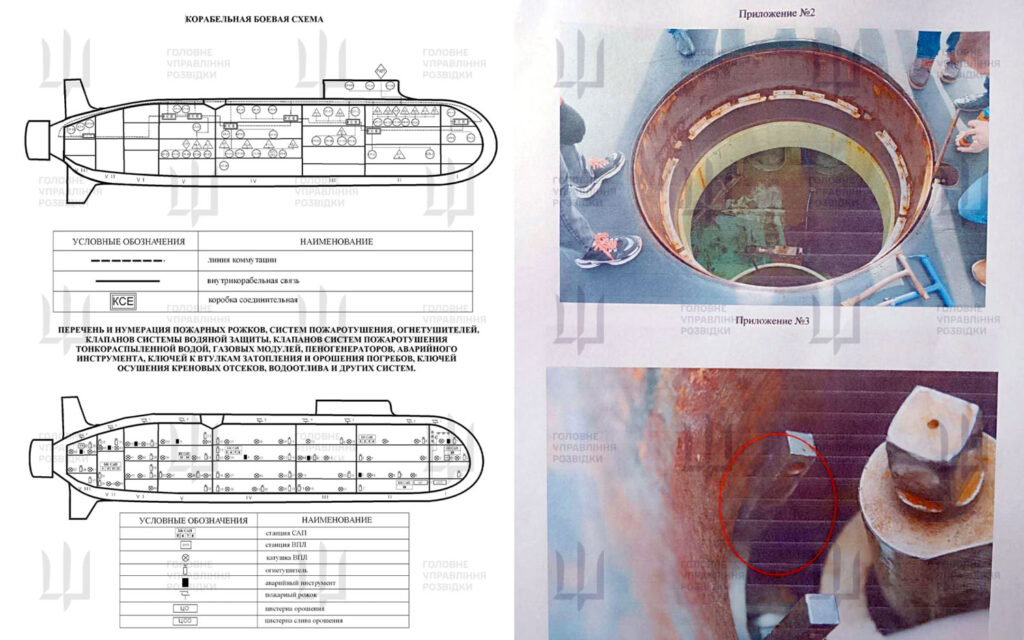
Ukraine’s defense intelligence says it has captured Russian nuclear submarine secrets after a major intelligence operation. The files reveal every detail of the Project 955A’s K-555 Knyaz Pozharsky, Russia’s newest Borei-A class nuclear submarine. Ukrainian officials say these documents expose the submarine’s inner workings and give a full view of its technical limitations.
This comes as the Russo-Ukrainian war continues. Ukrainian intelligence agencies operate actively inside Russia, hacking military systems, seizing and destroying logistics records, and, kinetically, striking military installations, defense plants, and fuel depots while targeting both military infrastructure and key figures in the Russian armed forces and military industry.
Knyaz Pozharsky is a Borei-class nuclear-powered ballistic missile submarine designed as part of Russia’s nuclear triad. It carries the RSM-56 Bulava submarine-launched ballistic missile system, a weapon deployed since 2019 and developed for the Russian Navy as a core element of the country’s nuclear deterrence structure.
Ukraine’s HUR defense intelligence agency reported that it obtained engineering documents and instructions for the nuclear submarine Knyaz Pozharsky, project 955A Borei-A. These documents include the ship’s combat layout, engineering schematics, survival systems, and the organizational structure of the crew. The files also detail procedures for damage control and towing, as well as how the crew handles cargo and casualties.
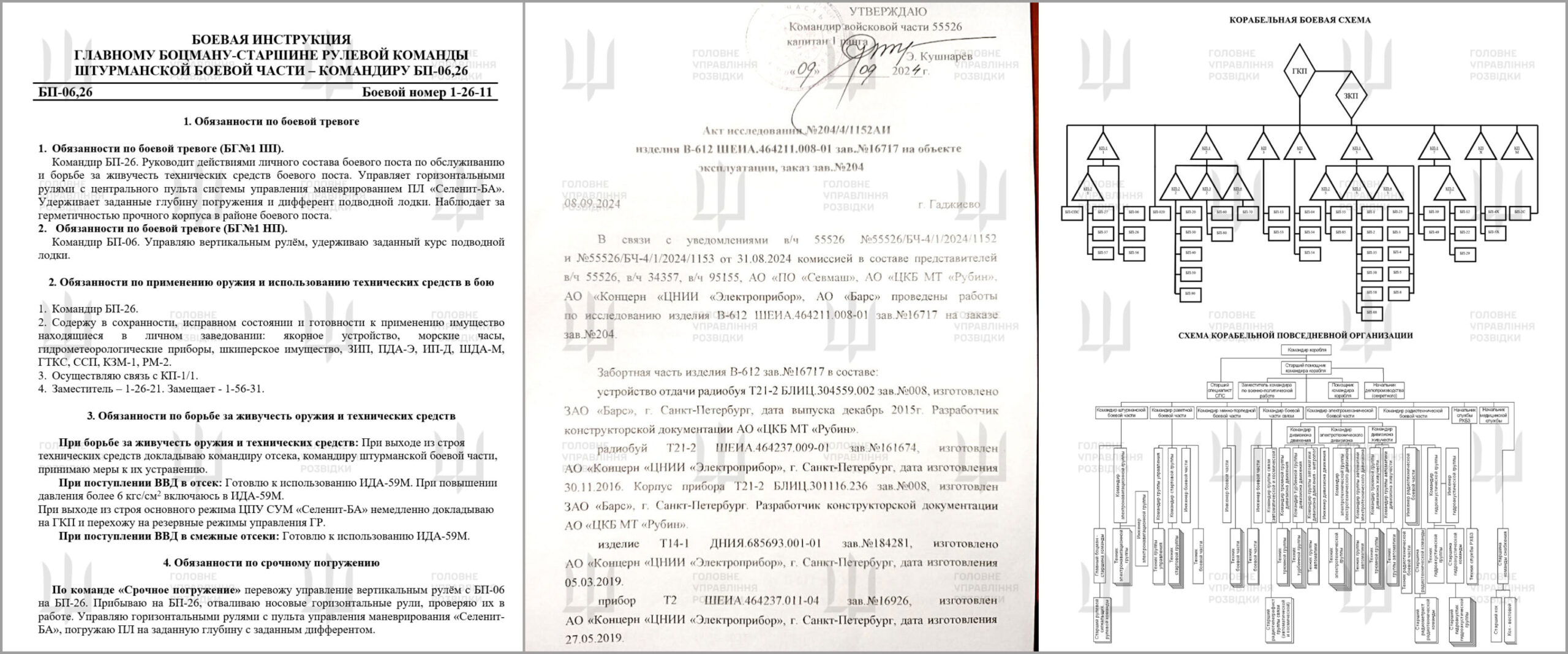
The documents include the names of every crew member, their roles, qualifications, and even their physical training levels. According to the intelligence agency, this trove also features combat instructions, orders posted in cabins and compartments, and a log regulating both daily routines and combat duties aboard the submarine.
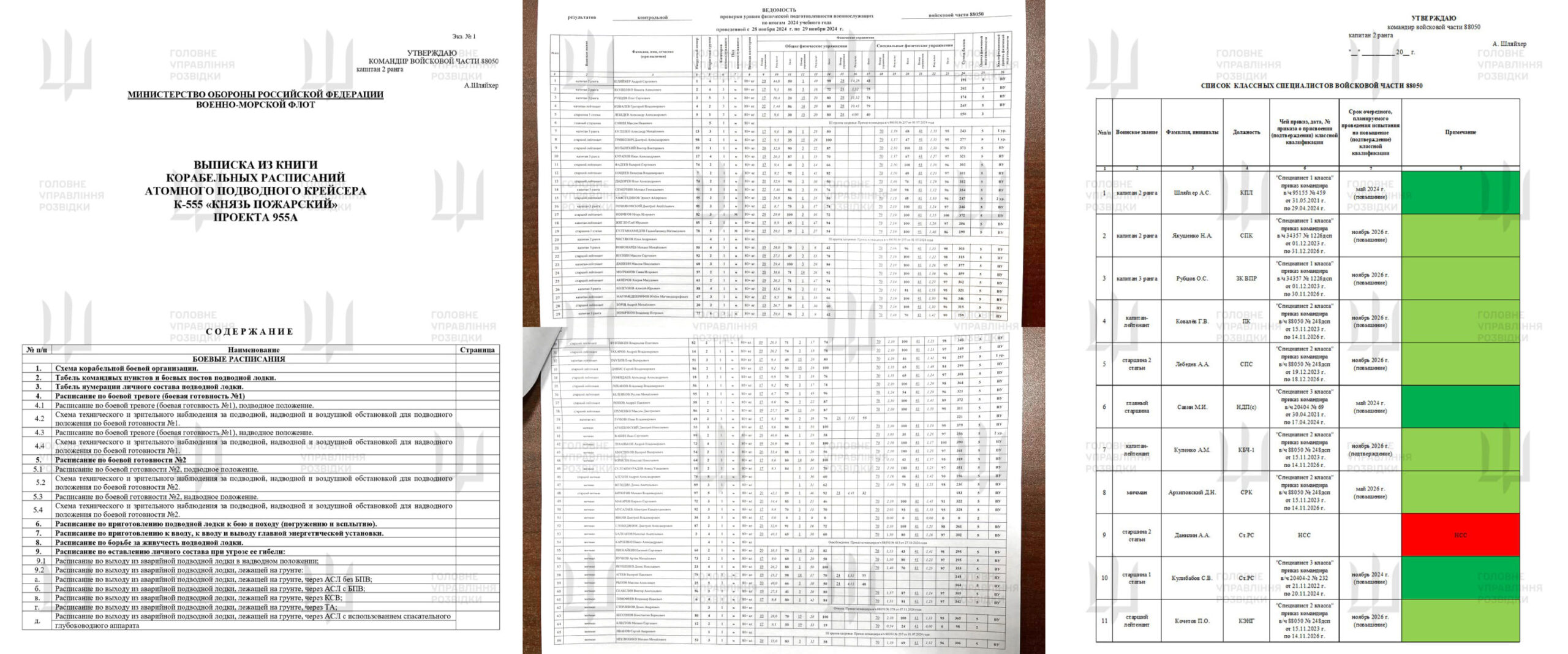
Ukraine’s defense intelligence says the obtained information highlights specific weaknesses in the Knyaz Pozharsky and other submarines of the 955A Borei-A class. These vessels carry 16 launch tubes for R-30 Bulava-30 intercontinental ballistic missiles. Each missile can carry up to 10 warheads, making the class a core part of Russia’s nuclear forces.
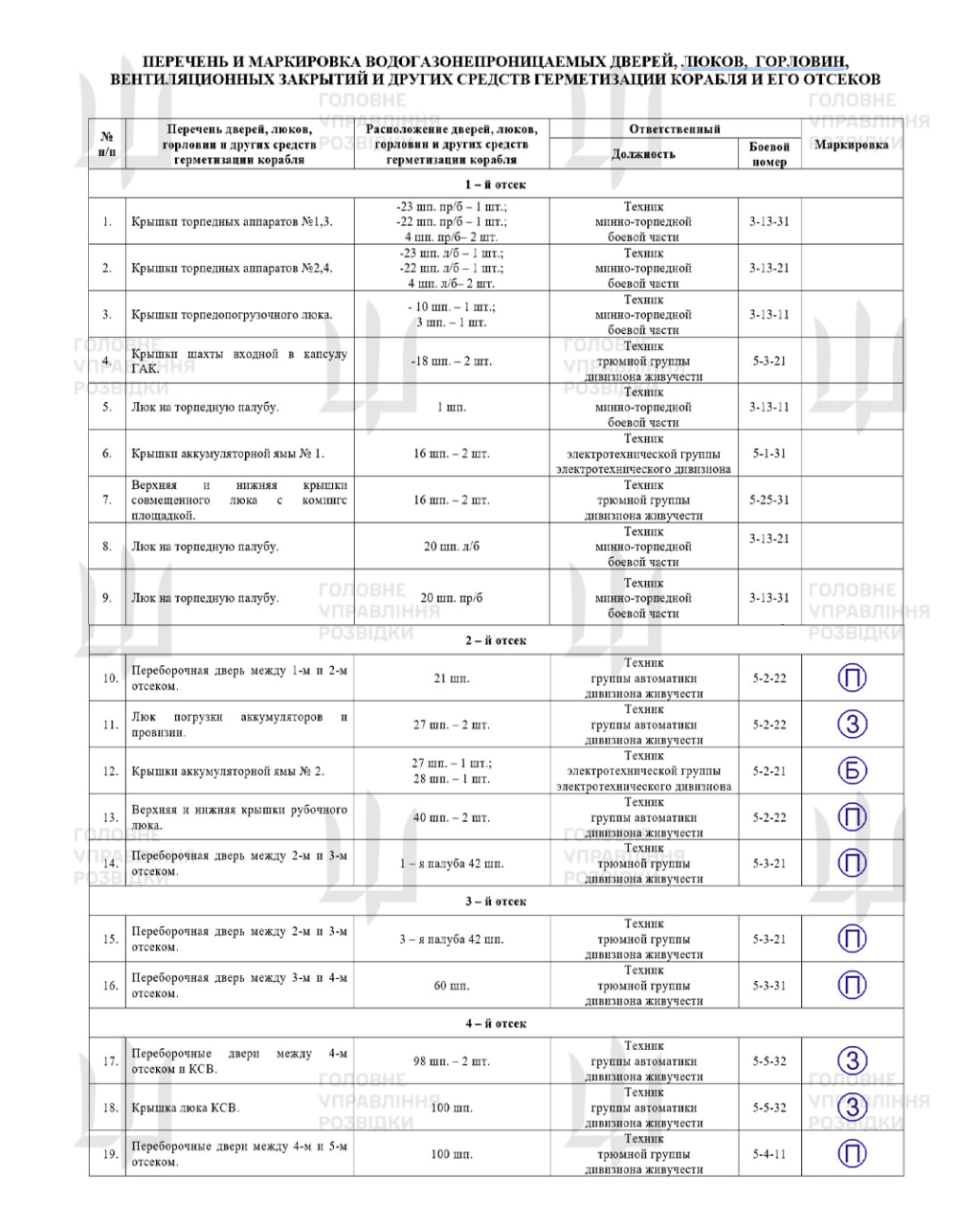
The Knyaz Pozharsky is assigned to the 31st submarine division of the Russian Northern Fleet, with its permanent base in the city of Gadzhiyevo in Murmansk Oblast.
On 24 July, the Kremlin said that Vladimir Putin attended the flag-raising ceremony for the Knyaz Pozharsky in Severodvinsk at the Sevmash shipyard in Arkhangelsk Oblast. At the ceremony, the submarine officially joined combat duty. The Knyaz Pozharsky became the 142nd nuclear-powered submarine built at this shipyard. Kremlin statements also claimed that six more submarines of the same class are planned by 2030.

Thanks to your incredible support, we’ve raised 70% of our funding goal to launch a platform connecting Ukraine’s defense tech with the world – David vs. Goliath defense blog. It will support Ukrainian engineers who are creating innovative battlefield solutions and we are inviting you to join us on the journey.
Our platform will showcase the Ukrainian defense tech underdogs who are Ukraine’s hope to win in the war against Russia, giving them the much-needed visibility to connect them with crucial expertise, funding, and international support.
We’re one final push away from making this platform a reality.
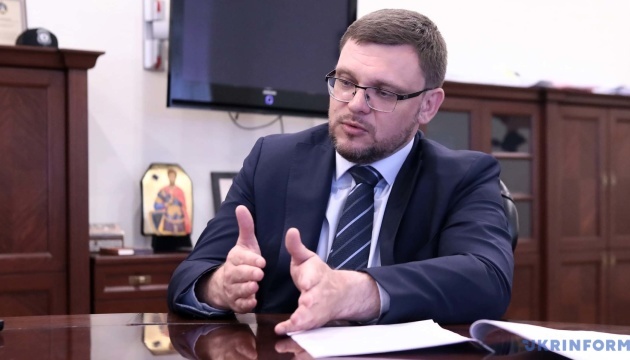
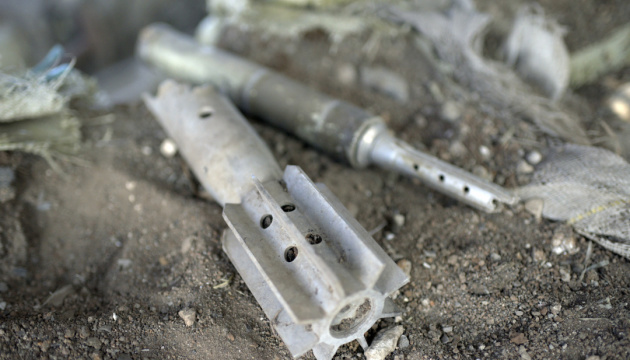
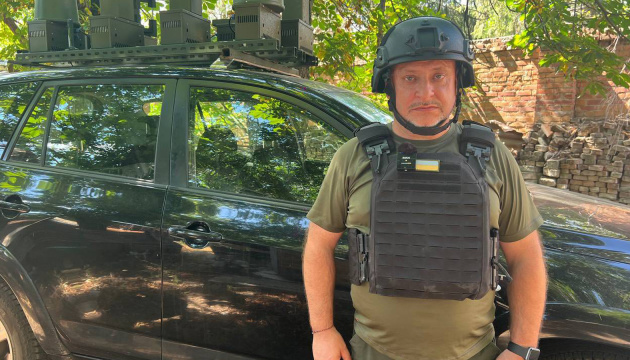
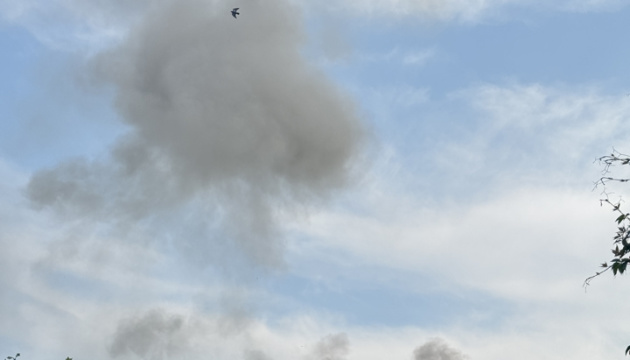

US lawmakers skipped a Russia sanctions vote and left the sanctions in Trump’s hands as his 8 August deadline approaches. The Hill says the Senate left Washington for its August break without advancing a sweeping sanctions bill aimed at Moscow, leaving the president to decide how to confront Vladimir Putin over the war in Ukraine.
The Hill reports that Trump warned that Putin has until 8 August to stop the war in Ukraine or face tariffs on countries that continue buying Russian oil. As a preview of this pressure, he imposed a 25% tariff on India, a major buyer of Russian energy. That is far below the 500% tariffs proposed in the stalled bill. Some senators admit that leaving the bill untouched puts the responsibility entirely on the president for now.
Republican senators say they expect Trump to act decisively. Republican Senator Mike Rounds said to The Hill that Trump is now disappointed in Putin. Democrats doubt that Trump will go as far as needed, though they acknowledge that his tone has grown tougher. Trump earlier described Russia’s air attacks on Ukraine as disgusting and said his team is ready to impose sanctions.
In response to threats of nuclear weapons from Russia’s former President Dmitry Medvedev, Trump ordered nuclear submarines to the region. Trump told reporters that his envoy Steve Witkoff will visit Russia after a trip to Israel. He stressed that he will impose sanctions but admitted he is unsure if they will change Moscow’s behavior.
The blocked bill was designed to hit Russia’s oil revenues hard by imposing tariffs on countries that keep buying Russian crude. Analysts at the Center for Strategic and International Studies argue that oil revenue is key to funding Moscow’s war. Supporters of the bill say a missed opportunity weakens the message.
Democrat Senator Richard Blumenthal, coauthor of the bill with Republican Lindsey Graham, said he would see it as a success if Trump imposed even a part of the planned tariffs.
Indian oil refiners have already paused imports of Russian oil after Trump’s 25% tariff announcement.
Graham said Trump has now adopted the idea of targeting countries that buy Russian oil. He added that Trump can act either through executive action or with the help of the bill if it passes later.
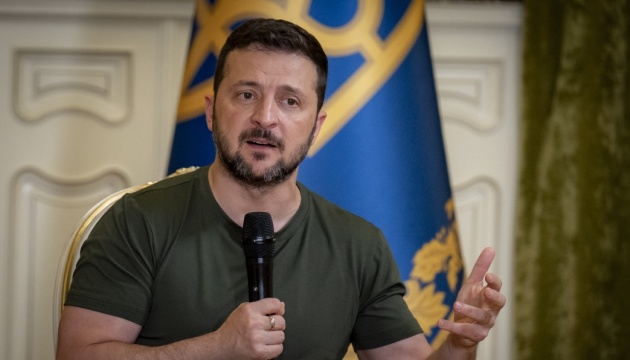
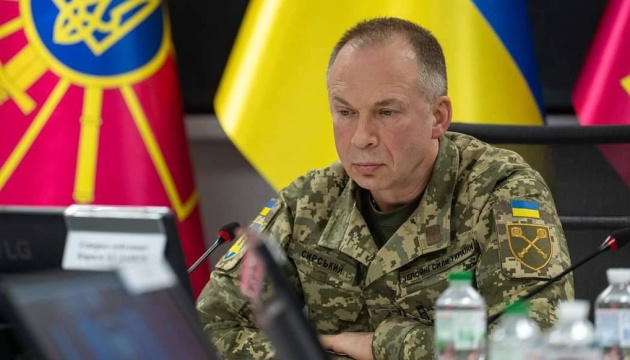
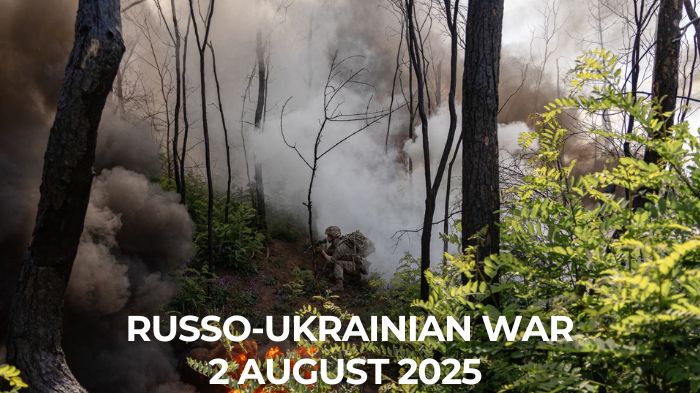
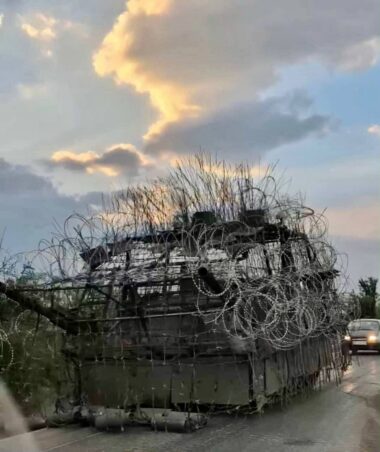 |
Forget steel: Ukraine’s new tank armor is rubber and spikes. Steel once defined tank protection. Now, under constant drone attack, Russia bolts spikes onto its armor while Ukraine wraps vehicles in rubber—a complete rethink of how to survive on the battlefield. |
 |
PrivatBank finally beat its own billionaires—but only 2,100 km from Kyiv. It took London and eight years to bring to justice Ukraine’s richest men who siphoned off 1.5% of its GDP |
Partisans: Russia’s 247th Air Assault Regiment crumbles amid desertions in Zaporizhzhia Oblast
. Desperation grows as Russia treats locals like expendable pawns.
“Stadium of death near Toretsk”: Russia lost 50,000 troops but failed to break Ukrainian defenses. “Only battle kangaroos and penguins missing,” says Ukrainian officer on the relentless fight.
Central Asia gas route to Russia disrupted after Volgograd explosions. A major gas pipeline supplying Russian military plants was knocked offline by explosions in Volgograd Oblast, cutting supply to ammunition and aircraft manufacturers.
Lithuanian military recovers mysterious drone 100km from Belarus border after five-day search. The drone that triggered Lithuania’s air defense warnings on July 28 has been found at Gajžiūnai training ground, resembling a Russian decoy aircraft.
SBU drones strike Shahed depot in Krasnodar used to launch attack drones against Ukraine. Ukraine launched simultaneous drone strikes on a Russian drone storage base in Krasnodar Oblast and a military factory in Penza – targets located 1,000 kilometers apart.
. Multiple Russian governors confirmed drone strikes on petroleum and defense facilities, with attacks spanning from Samara to Ryazan oblasts
Ukraine redirects $ 192 mn to drone units that eliminated 22,700 targets in one month. Six Ukrainian drone units that destroyed 22,700 Russian targets in July will receive over $190 mn in emergency funding
Russia won’t change after Putin, Ukraine’s spy chief says. Russia’s totalitarian system is built to outlive its leader, ensuring the war and threats to Europe won’t end with Putin.
US and NATO launch new $ 500 million tranche system to fast-track weapons deliveries to Ukraine. NATO countries will negotiate among themselves to fund American weapons for Ukraine under a new $10 billion mechanism that bypasses traditional arms sale procedures, Reuters reported
NATO unleashes new $10 billion “combat wallet” for Ukraine as Putin’s increses attacks on civilians. The West scrambles to meet Ukraine’s demands while the Kremlin eyes total capitulation.
US, Russia may prepare for show of force as Trump raises stakes with nuclear submarines. The stakes skyrocket as diplomacy falters.
“They broke all 10 rules”: Ukraine calls to eject Russia from OSCE. Moscow blocks European security watchdog’s operations to hide atrocities.
Ukrainian foreign minister says 70% of Russia’s shadow oil fleet passes under NATO’s nose. As Warsaw assumes regional leadership, Ukraine calls for bold action on Kremlin oil tankers.
Trump deploys nuclear submarines near Russia after Medvedev’s threats
. The United States repositioned nuclear submarines near Russia following escalating online threats between President Trump and a former Kremlin official over the war in Ukraine.
Republican lawmaker to “friends in Russia”: Trump “will not be trifled with” amid escalating nuclear tensions. Following President Trump’s decision to deploy two nuclear submarines after Russian threats, Senator Lindsey Graham warned Russia it is “overplaying your hand” with Trump
Tortured Ukrainian reporter Victoria Roshchyna honored with highest state award after death in Russian captivity. Roshchyna, who bore knife wounds and electrical torture scars before dying in Russian detention, received Ukraine’s Order of Freedom posthumously from President Zelenskyy for her “civic courage.”
Ukrainian teenagers escape Russian “reeducation camps” and forced military conscription. Maria wore traditional Ukrainian vyshyvanka to Russian school and argued with teachers about Ukraine, resulting in classmates calling her “ukropka” and beating her while teachers threatened her mother with loss of parental rights.
Read our earlier daily review here.
You could close this page. Or you could join our community and help us produce more materials like this.
We keep our reporting open and accessible to everyone because we believe in the power of free information. This is why our small, cost-effective team depends on the support of readers like you to bring deliver timely news, quality analysis, and on-the-ground reports about Russia's war against Ukraine and Ukraine's struggle to build a democratic society.
Become a patron or see other ways to support.
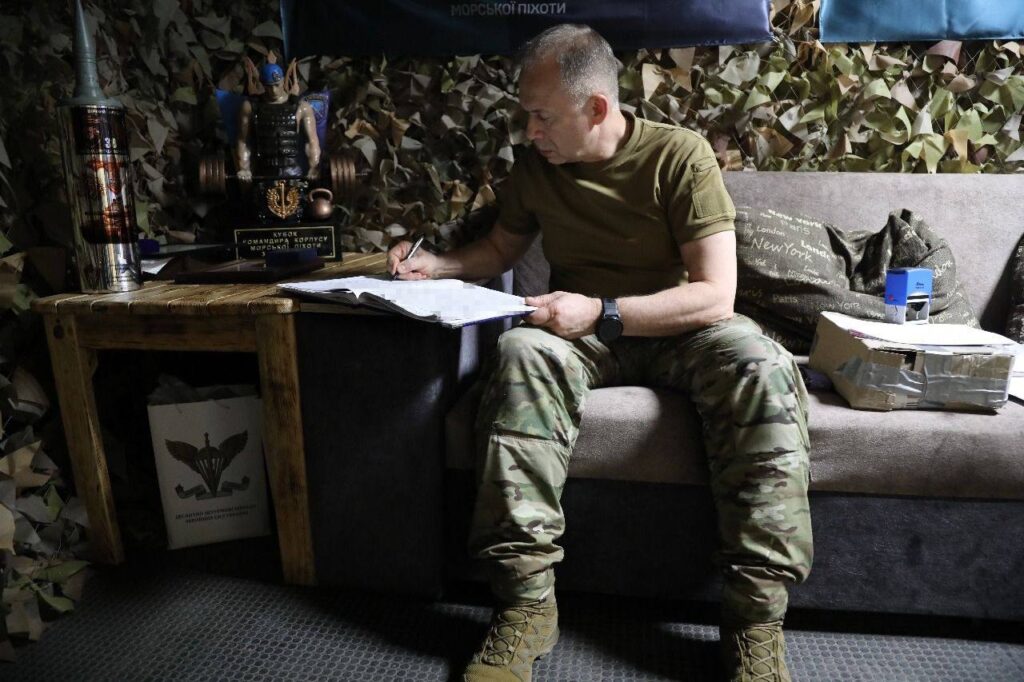
Russia’s total infiltration in Pokrovsk has failed as Ukraine’s top general Syrskyi says Russian attempts to slip inside were stopped fast. The commander-in-chief described how the army adapts to this tactic on several threatened directions and why the Pokrovsk sector in eastern Ukraine’s Donetsk Oblast remains one of the most difficult areas.
Donetsk Oblast has remained Russia’s main focus for many months, with the fiercest fighting and the largest concentration of its troops taking place there. This year, Russia has largely shifted from its infamous “meat-wave” frontal assaults to tactics based on small groups. Instead of large-scale offensives, Russian forces now send numerous teams of only a few soldiers each to probe for weak spots in defenses. Once a position is taken, reinforcements are brought in to expand and secure the gain.
Syrskyi wrote on Facebook on 2 August that Russian forces try a tactic of the so-called “total infiltration,” aiming to push through defenses without a large assault. He said these efforts include hidden movements toward Pokrovsk and other parts of Donetsk Oblast. According to him, these infiltration moves have been crushed before they reach their targets.
Syrskyi explained that he spent the day visiting all command posts of the Armed Forces and National Guard units holding the Pokrovsk direction. He said he met the commander of drone forces, corps commanders, and brigade commanders. During these meetings, they reviewed the battlefield conditions and planned how to strengthen defenses in areas where Russian pressure is growing.
The general said the situation is currently most dangerous on Pokrovsk, Dobropillia, and Novopavlivka directions. Russian forces seek weak spots, intensify their activity, and try to capture important Ukrainian urban areas. Syrskyi said Ukraine is countering total infiltration with special mobile reserves, whose role is to search for and destroy these teams before they can create problems inside the lines.
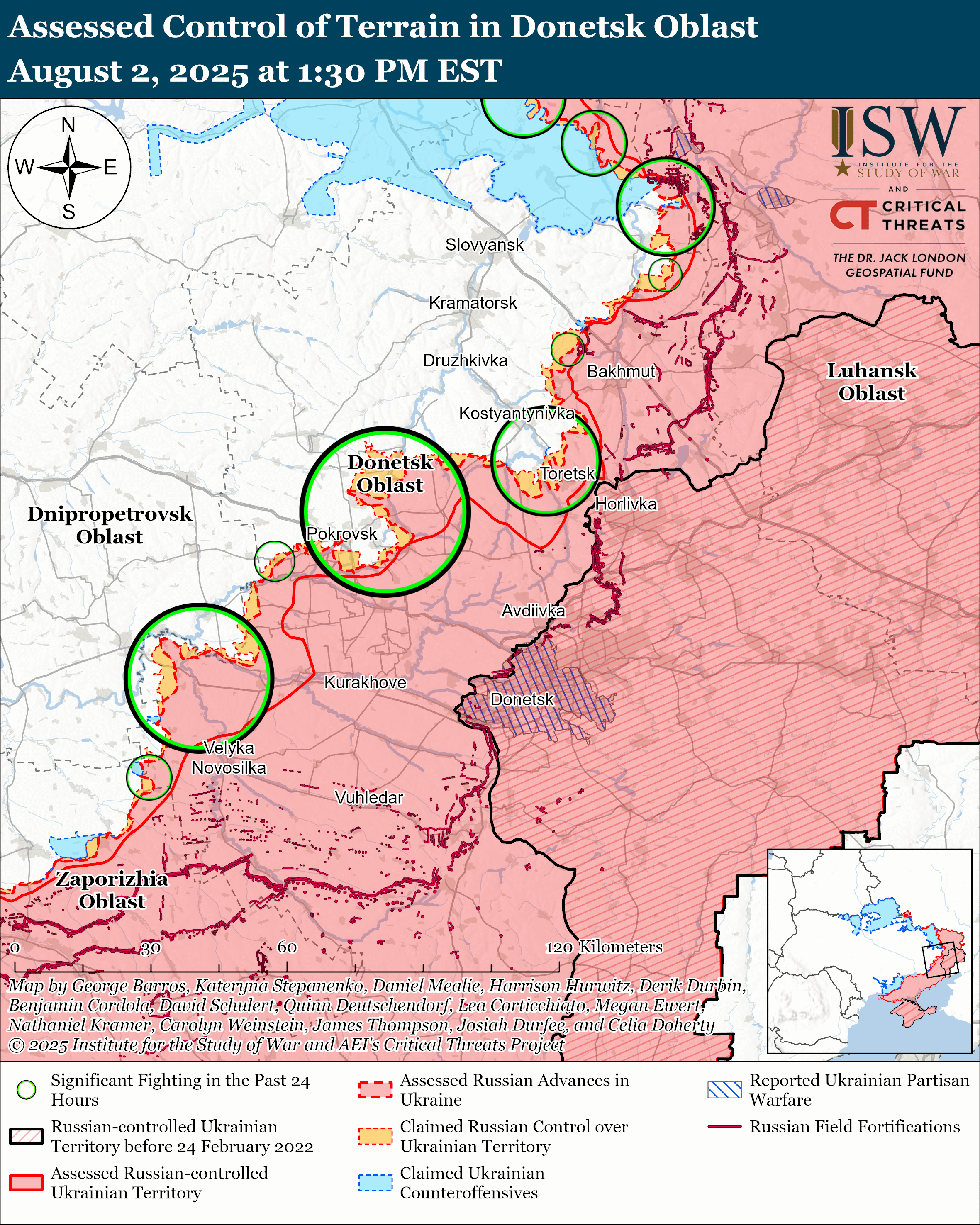
He stressed that the focus remains on improving fortifications. Syrskyi discussed with commanders how to reinforce positions with engineering work, minefields, barriers, and underground structures that protect against drones. He said this work continues but must be more active, broad, and complex.
The US-based Institute for the Study of War (ISW) noted in its 2 August daily reports that “Ukrainian forces recently advanced near Novopavlivka and in western Zaporizhzhia Oblast, and Russian forces recently advanced near Toretsk.”

Thanks to your incredible support, we’ve raised 70% of our funding goal to launch a platform connecting Ukraine’s defense tech with the world – David vs. Goliath defense blog. It will support Ukrainian engineers who are creating innovative battlefield solutions and we are inviting you to join us on the journey.
Our platform will showcase the Ukrainian defense tech underdogs who are Ukraine’s hope to win in the war against Russia, giving them the much-needed visibility to connect them with crucial expertise, funding, and international support.
We’re one final push away from making this platform a reality.
